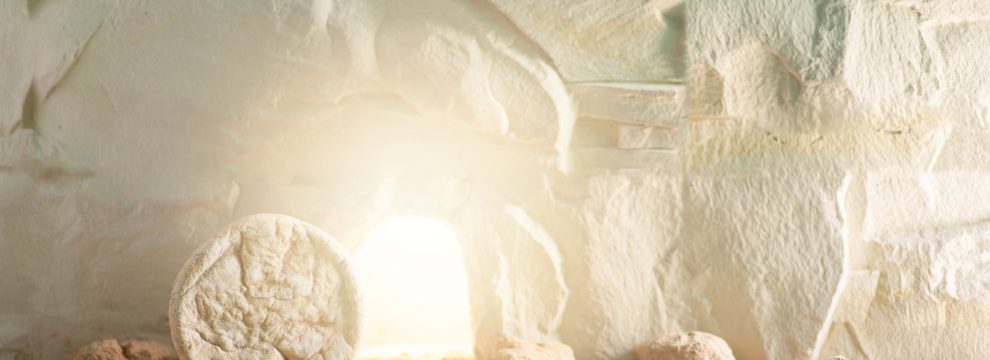It’s real . . . with sneak peeks throughout the Bible to prove it.
© desireofmysoul.faith & SoulBreaths.com. All rights reserved.
READING TIME: 5 MINUTES.
Death. Is it a body decomposing into nothingness, trapped in a waiting-for-Godot moment—as Emily Dickinson portrays, rather derisively, in her “Alabaster Chambers” poem below? Or is it a future transition of the soul-body union into something far greater?
Safe in their Alabaster Chambers—
Untouched by Morning
And untouched by Noon—
Lie the meek members of the Resurrection—
Rafter of Satin—and Roof of Stone!
—Emily Dickinson, original first stanza;
later published in her third. version posthumously, in 1890
You probably have your take on the resurrection matter. But opinions and poets aside . . . the real question is, what does God say? In His words, the Bible. After all, it’s His creation, His rules, His story. The gist of His resurrection event unfolds like this . . .
Death isn’t the end. It’s another beginning. The soul is eternal.
God said to Moses, “I am the God of your father, the God of Abraham, the God of Isaac, and the God of Jacob.” At this, Moses hid his face because he was afraid to look at God. —Exodus 3:6, approximately 1446 BCE.
What was God saying?
I am the God of your father—not I was.
Your father’s soul is with Me. His soul is not dead.
Abraham, Isaac, and Jacob have long past from this world,
and yet, their souls are alive.
I am their God.
But God doesn’t leave things suspended there, with the eternal soul separated from its earthly vessel (the body) . . . the design from the beginning was for us to enjoy an everlasting soul-body existence made holy unto Him.
That’s why an integral part of the what’s-ahead story is the soul-body reunion, coming at the end of (future of) days—called acharit ha-yamim in Hebrew, אחרית הימים—orchestrated by the hand of God.
He’s been telling humanity about that for thousands of years—and He’s given ten sneak-peek accounts of it to make this seemingly preposterous resurrection notion understandable to us, recognizing it as a valid upcoming event.
The links for the resurrection accounts are in the last part of this post, including a link to a brief timeline of some resurrection clues, starting with 1400s BCE/BC.
ALL THAT BEGS THE QUESTION
Since resurrection is a futuristic event, what is our life down here about?
There’s much to that answer—some discussed in this series and elsewhere on this blog. But for now, as one rabbinic source puts it . . .
This world is like a lobby before the World to Come;
prepare yourself in the lobby
so that you may enter the banquet hall.
—Rabbi Yaakov, Pirkei Avot 4:21
(Ethics of our Fathers, ethical/moral Torah teachings
from the Mishnaic 2nd century CE period)
Keep this in mind: There are no do-overs. No reincarnation to try it again. God’s Word is pretty straightforward about that. That’s why what you do down here in the “lobby” is critical.
It all comes down to this: God is sovereign. He sits on the throne as judge—both justice and mercy.
But for the mercy part, you need to be living according to His divine plan for your soul, His roadmap—not doing your own thing or believing your version of what He said.
RESURRECTION: SNEAK PEEKS
Explore each account via the links below. These resurrected people went on to live again . . . but eventually had to die again and now await the resurrection occurring at the end of days.
That is, all except one.
The Life Giver . . . and Life Changer.
The Restorer, Repairer, Healer.
The Redeemer. The Messiah.
There’s more coming up about that singularly unique resurrection story in this series. But now . . . those real-life resurrection accounts.
Real-Life Accounts
Real-Life Accounts Cont’d
The Resurrection Thunderbolt From Heaven
Rabbi Scholars Defend Jesus’s Resurrection
Why A Bodily Resurrection
His Righteousness Can Be Yours
Biblical timeline of resurrection cues and sneak-peek accounts
RELATED RESOURCES
McFarland, Philip (2004), Hawthorne in Concord, New York: Grove Press, p.149, ISBN0-8021-1776-7.
Royot, Daniel (2002), “Poe’s humor”, in Hayes, Kevin J, The Cambridge Companion to Edgar Allan Poe, Cambridge University Press, pp. 61–2, ISBN0-521-79727-6.
http://www.jewishencyclopedia.com/articles/13614-shulamite
http://jwa.org/encyclopedia/article/shunammite-midrash-and-aggadah
https://www.biblegateway.com/resources/all-women-bible/Great-Woman-Shunem
http://www.chabad.org/library/article_cdo/aid/107781/jewish/Ani-Maamin-I-Believe.htm
http://www.myjewishlearning.com/article/jewish-resurrection-of-the-dead/
Book of Acts timeline. https://biblehub.com/timeline/acts/1.htm/
Photo Credits
Resurrection/Tomb photo by jchizhe, purchased on iStock.com (Stock photo ID:1243063771)
Bible photo by Kelly Sikkema on Unsplash.com
Gavel photo by Tingey Injury Law Firm on Unsplash.com
Roll the Drums photo by Marija Zaric on Unsplash.com


